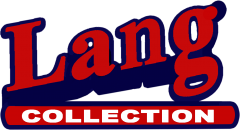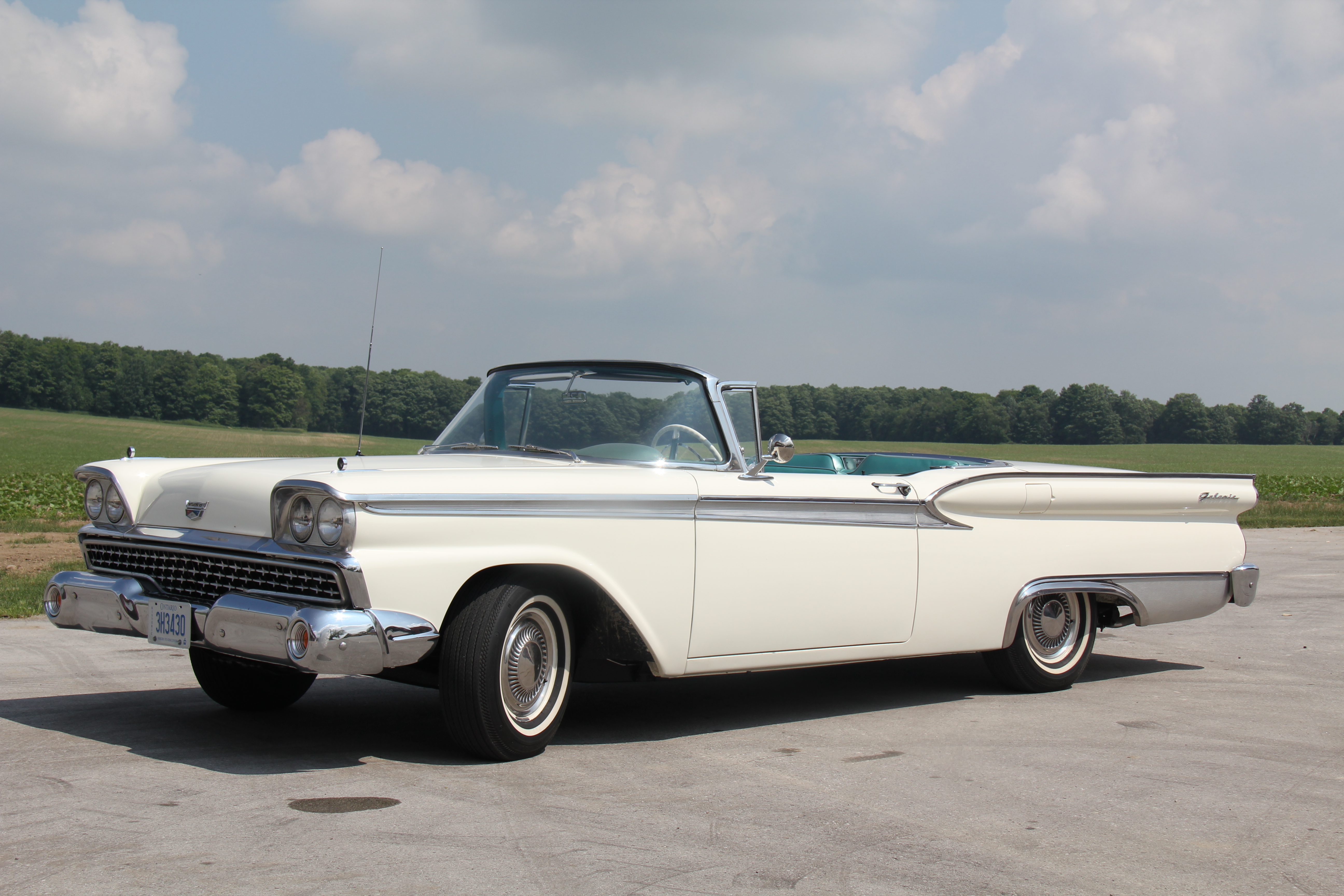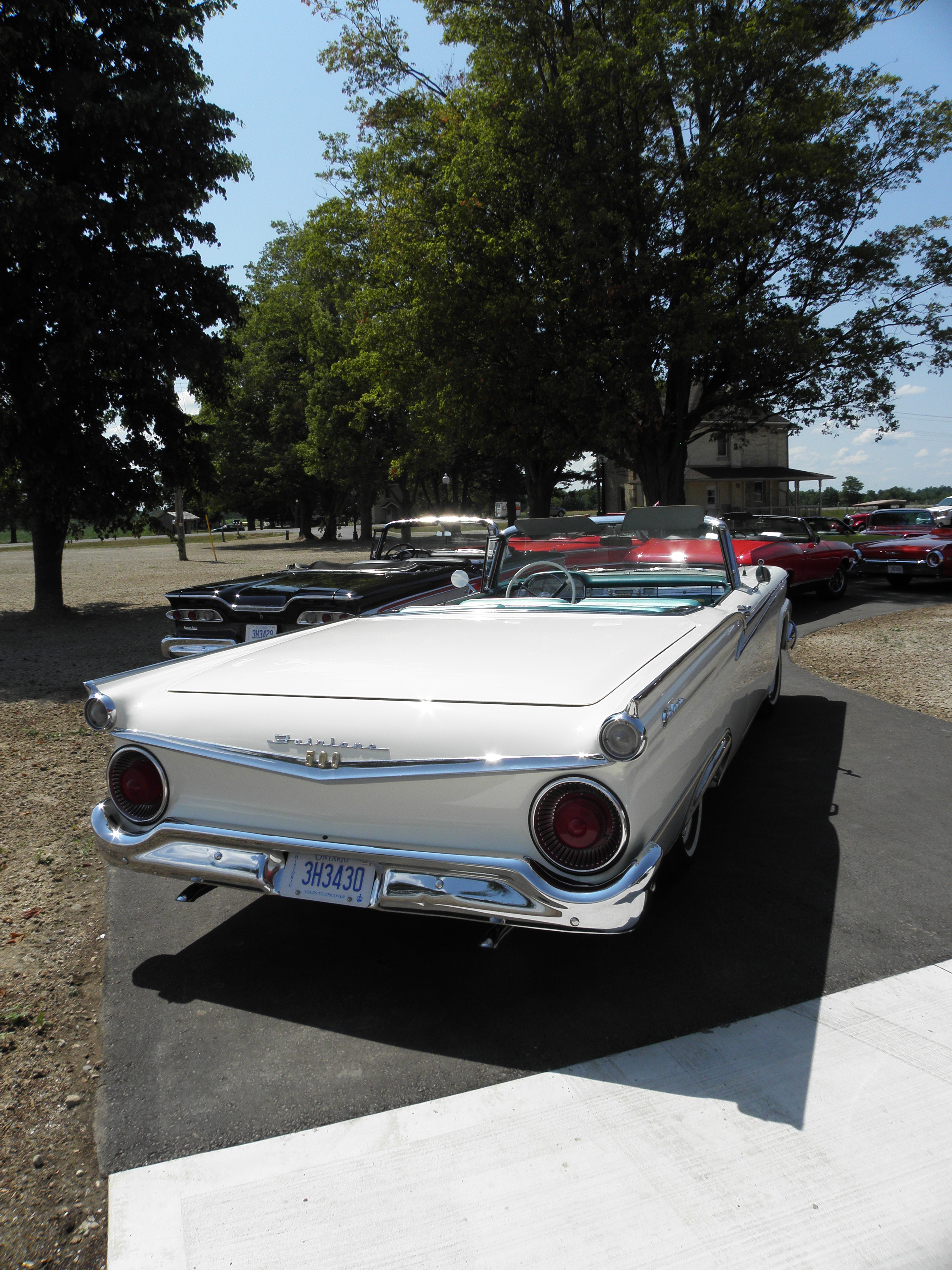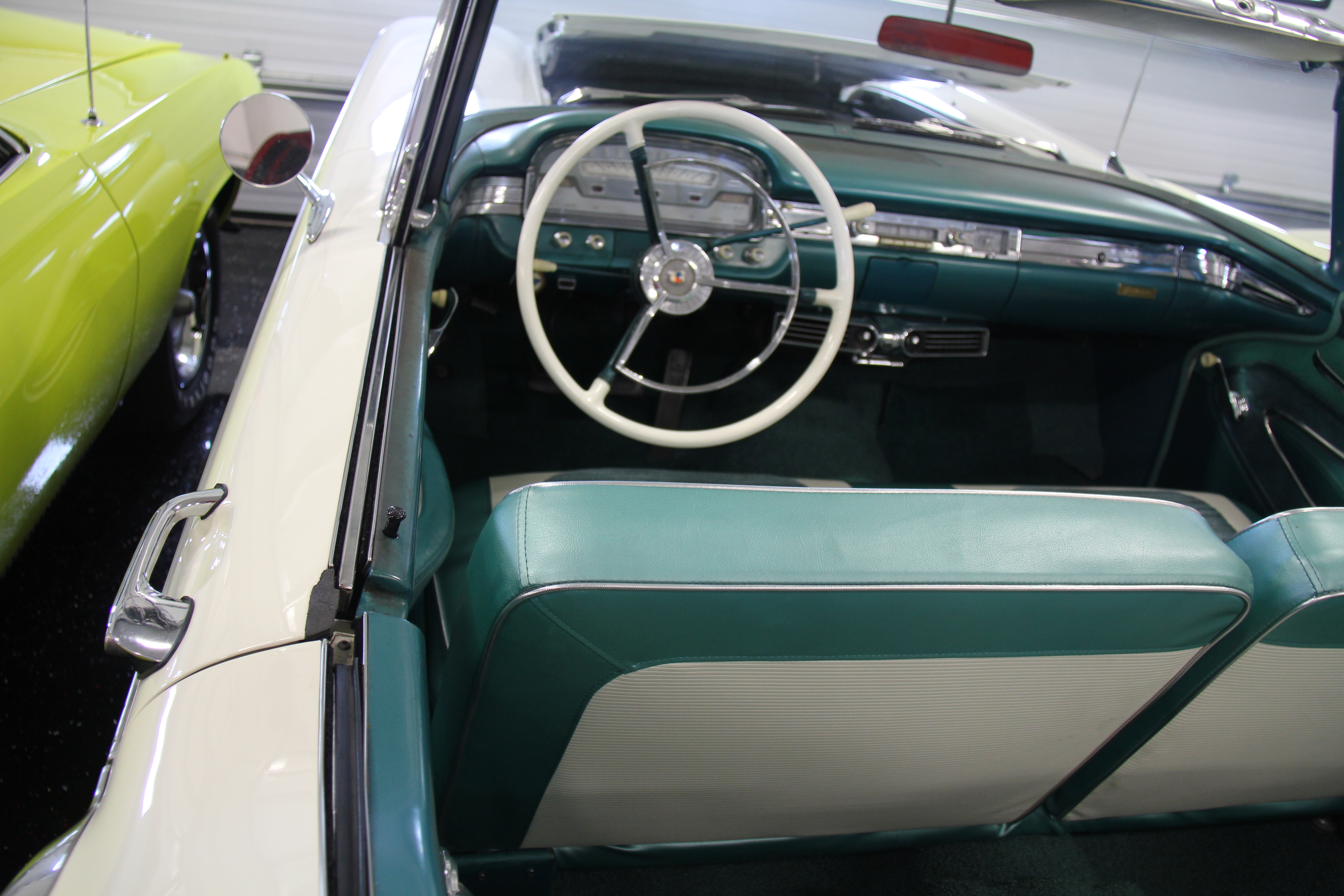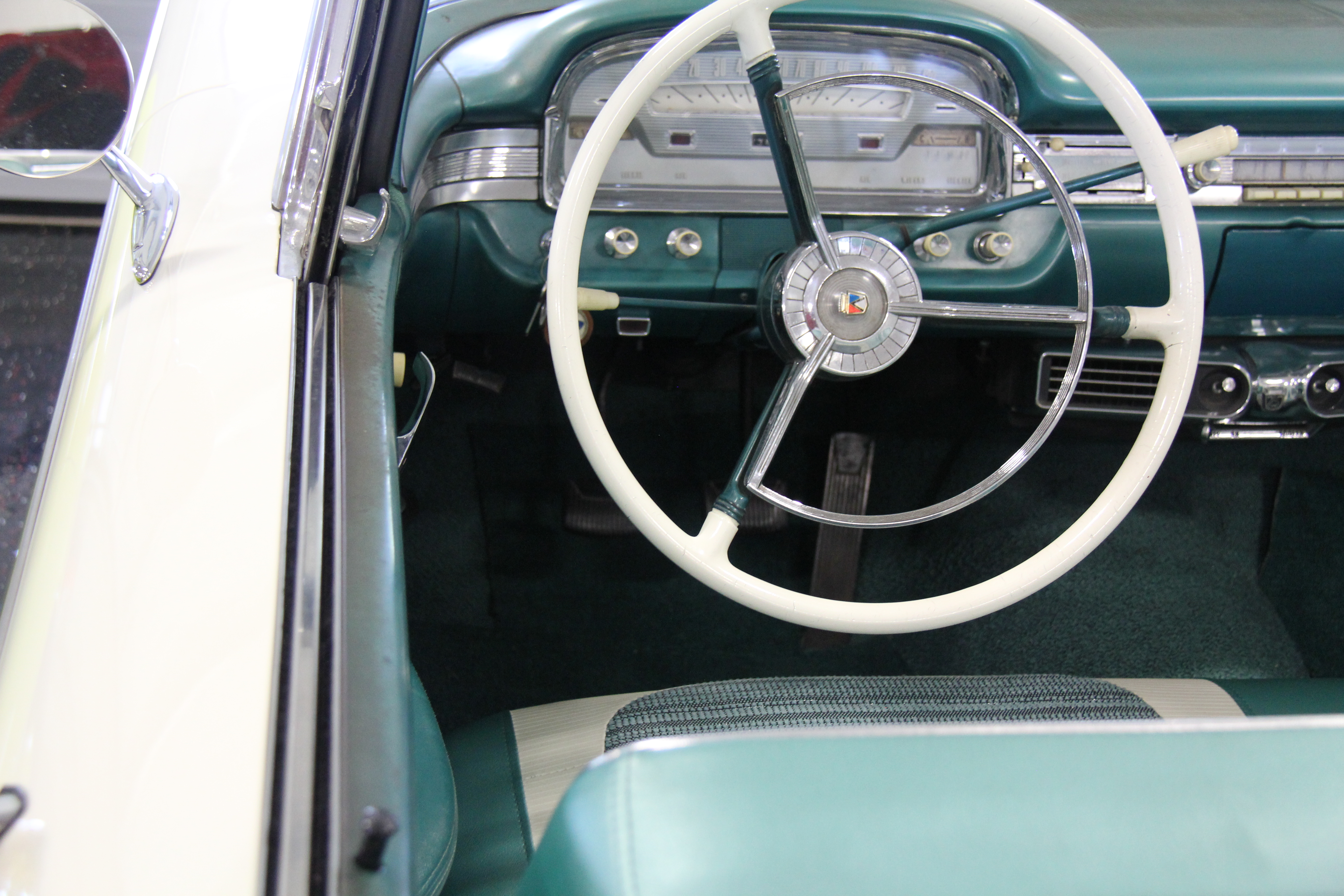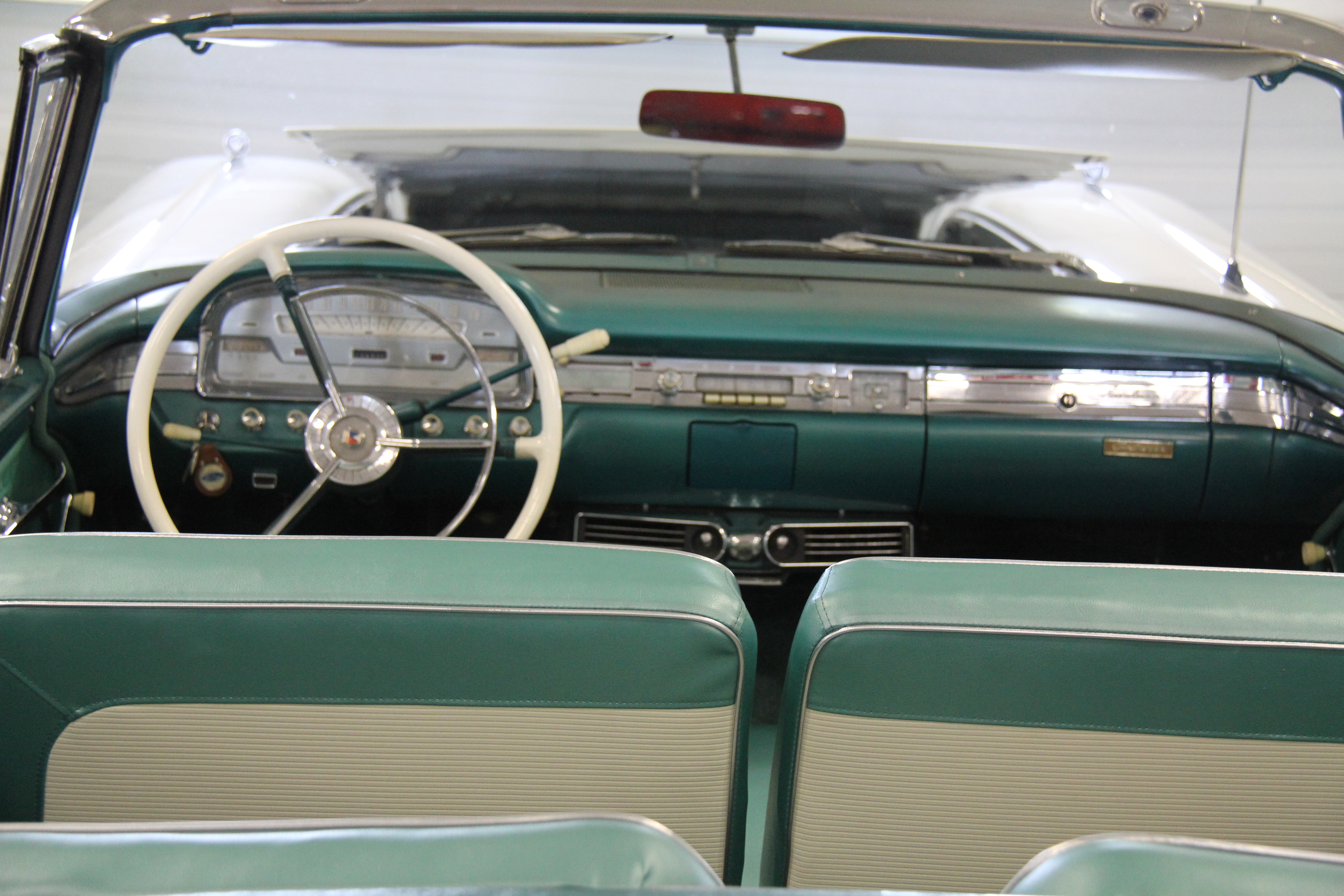1959 GALAXIE SKYLINER NO 25
The outstandingly original Ford Skyliner Convertible had a complex mechanism which folded the front of the roof and retracted it under the rear decklid. No hydraulic mechanisms were used as in regular convertibles of the era. The 1959 Skyliner top has five electric motors, four lift jacks, a series of relays, ten solenoids, four locking mechanisms for the roof, and a total of 610 ft. of wiring. The large top took up vast amounts of trunk space, limiting the car's sales (however, unlike what most people believe, the mechanism had decent reliability). Production totaled 12,915 in 1959.
An electric clock was standard. Fuel consumption was around 14 mpg (US) overall. The fuel tank was placed vertically behind the rear seat, which increased safety in rear collisions.
The wheelbase of the Skyliner was 118 in (3,000 mm) and the overall length was 210.8 in.
During the 1959 model year the Galaxie series was added to Ford’s full-size range and the Skyliner model was absorbed into that series. Although the 1959 Galaxie was designated as a separate series, Galaxies carried both “Fairlane 500” and “Galaxie” badging, on the rear and sides respectively. At the time of its introduction, the Skyliner was the only true hardtop convertible in the world. Today, it has become a collectible car.
The design attracted more attention than sales; the option was expensive and took up almost all the trunk space when retracted. It required the roof to be made shorter than the other Fairlanes, and the trunk to be larger. This car was originally a California car; then sold to British Columbia before finally coming to the Lang Collection in Ontario.
The Fabulous Fifties
As the world moved into the 1950’s, memories of the Great Depression and WWII were fast disappearing in the rear view mirror. People started looking ahead to all the magic that had been promised in literature of the day. Jobs were plentiful, the Post War Baby Boom was in full Boom, consumer goods were being made as fast as possible and people were moving to the country and suburbs. You needed a car to get around. As an aside to the process, design was finally becoming as important as engineering in selling new cars. People were tired of the ordinary; they wanted exciting!
The auto companies were aware of this pent up demand and started to design cars to draw the people in to their showrooms. In 1950 the cars looked a lot like the pre-war models. Customers wanted a new look to what they drove and the companies gave it to them. The first out of the box was the 1953 Corvette, a small two person sports car designed by Harley Earl head of GM Design. GM followed that up with the 1955 models that included the classic Chevrolet Bel Air. That year, 1955, also marked the debut of more power in the very successful small block V8 that continues to be made to this day. As the decade went by, the tail fins that marked the era became more and more pronounced.
Ford brought the T-Bird, Mercury V8 and the longer, lower, and wider Galaxie V8 to the market by 1957. For the first time since the 1930’s, Ford once again seized the number two slot in sales behind General Motors in the mid-fifties.
On the engineering side, Chrysler introduced the Hemi engine to the public in 1952 and made V8’s available to the Dodge and Plymouth lines in the redesigned `55 models. That year also marked the debut of the high powered Letter Series of Chrysler 300’s, the precursor of the Muscle Car Era of the `60’s.
The Fabulous Fifties also saw the number of options being made available to all the models sky rocket: The following list shows when and by whom some of these options made their debut:
Automatic Transmissions: 1950 Powerglide, Oldsmobile, Cadillac
Power Windows: 1951 Cadillac, by Mid-50’s all makes and models
Suspensions: Solid axles replaced y independent suspension (Studebaker 1950)
Chassis: Unibody – Chrysler (1935) Everyone by 1957
V8 engines: Chevrolet small block V8 – 1955, still in production
Lincoln Y-block V8 1952 – Then Ford Windsor V8
Chrysler: Hemi engine 1950, later versions still in production
Seat Belts: three point seat belt patented in 1955.
Air Conditioning: Chrysler Imperial, 1953
Power Steering: Chrysler Imperial: 1951 Hydraguide
Radios: First all transistor radio: Chrysler/ Philco 1956.
These options are almost taken for granted now by car owners but they all trace their everyday roots back to the Fabulous Fifties.
